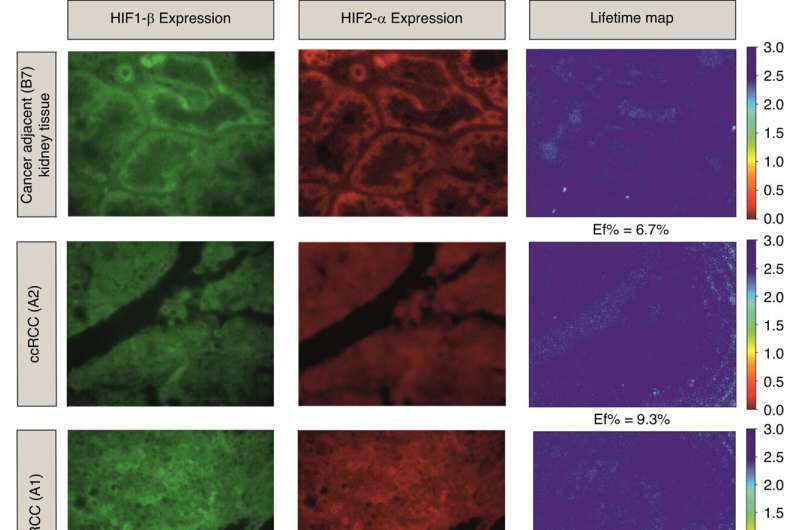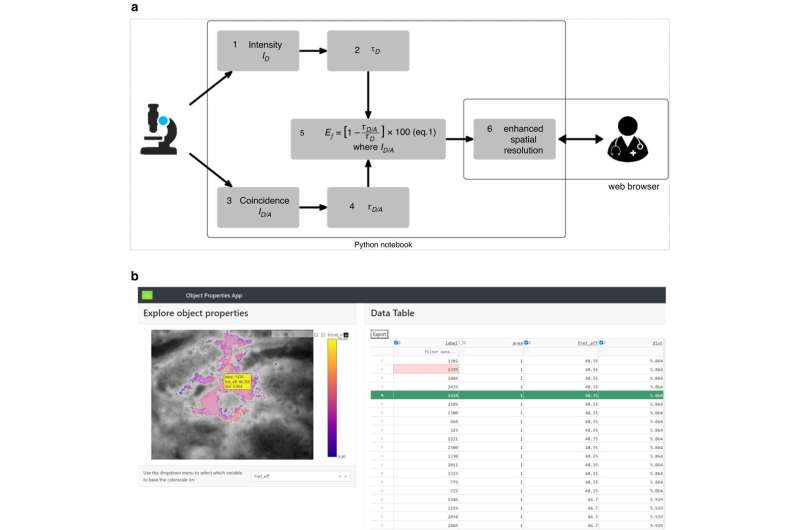This article has been reviewed according to Science X's editorial process and policies. Editors have highlighted the following attributes while ensuring the content's credibility:
fact-checked
trusted source
proofread
New tumor spatial mapping tool to assess cancer aggressiveness and personalize treatment

Scientists have developed a new AI tool that maps the function of proteins in a cancerous tumor, enabling clinicians to decide how to target treatment in a more precise way.
In cancers such as clear cell renal cell carcinoma (ccRCC), responses to existing treatments are different for each patient, making it difficult to identify the right drug treatment regime for each patient. For example, cancer therapeutic Belzutifan has recently been approved to treat ccRCC, but only has a response rate of 49% in patients with the most common form of the condition.
To better understand why some patients respond better than others, researchers from the Universities of Bath and Nottingham studied the function of Hypoxia-Induced Factor Alpha (HIF2α), a key target of ccRCC that is blocked by Belzutifan.
Previous studies have shown that levels of HIF2α don't necessarily correspond to the aggressiveness of the tumor, and that counterintuitively when there were greater levels of the protein present, the HIF2α was less active. This means that administering higher doses of Belzutifan potentially exposes the patient to costly, toxic therapeutics that may not work and could even make the tumor more drug-resistant.
The cross-disciplinary team of biophysicists, biologists and computational scientists has devised a new tool, called FuncOmap, which maps the functional state of target oncoproteins onto the tumor images. This will enable clinicians to visualize directly the locations in the tumor where oncoproteins are interacting, allowing for more accurate diagnosis and informing the best treatment for each patient. The findings are published in the journal BJC Reports.

Professor Banafshé Larijani, Director of the Center for Therapeutic Innovation at the University of Bath co-led the study. She said, "People respond to drugs very differently. So it is crucial to be able to predict how patients will respond to drugs individually so a therapy can be tailored to be effective while giving the lowest dose to minimize side effects.
"Our new computational analysis tool uses precision to directly map the functional states of oncoproteins in patients' tumor sections, so that clinicians can improve patient stratification, enabling personalized medicine."
The team is now collaborating with Dr. Amanda Kirane's Laboratory, as well as other surgeons and clinicians, at Stanford University School of Medicine (U.S.) to develop and optimize the tool further in the clinical arena.
Professor Eamonn O'Neill, Head of Bath's Department of Computer Science and Director of UKRI Center for Doctoral Training in Accountable, Responsible and Transparent AI (ART-AI), said, "This study describes the kind of novel and impactful research that is the essence of working across disciplines.
"It brings together computer science, biology and physics, under the umbrella of the UKRI Center for Doctoral Training in Accountable Responsible and Transparent Artificial Intelligence, to deliver image analysis that has the capacity to directly inform clinical decision-making and personalized clinical outcomes in cancer treatment as well as other diseases."
Professor Jonathan Knight FRS, Vice-President (Enterprise) at the University of Bath, said, "The excitement of this paper lies not just in the work being reported, but in its illustration of how linking the research areas of biophysics and translational medicine with modern computational science promises to accelerate the translation of research into valuable tools for the clinical environment. This really amplifies the value to be gained from transdisciplinary studies."
More information: Elena Safrygina et al, Spatial functional mapping of hypoxia inducible factor heterodimerisation and immune checkpoint regulators in clear cell renal cell carcinoma, BJC Reports (2024). DOI: 10.1038/s44276-023-00033-7


















